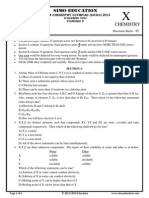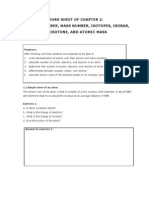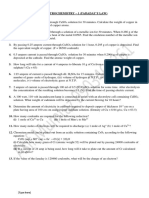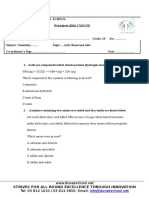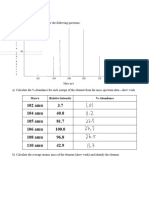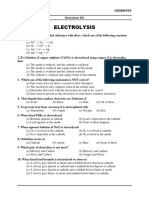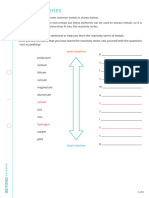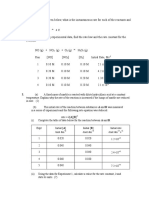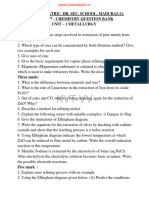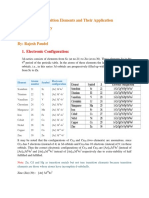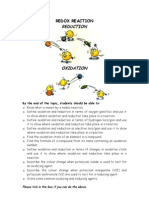100% found this document useful (1 vote)
489 views14 pagesSSLC Chemistry: Periodic Table Guide
The document provides information about electronic configuration and the periodic table in three paragraphs:
1) It introduces atomic orbitals and shells, and provides the maximum number of electrons that can be in each shell. It gives the electronic configurations of some elements as examples.
2) It describes how electrons fill different subshells (s, p, d, f) in order of increasing energy. It provides a diagram of subshell filling order and gives the maximum electrons in each subshell.
3) It discusses different ways of writing electronic configurations, including using noble gases and showing the shell or subshell order. It also describes how electronic configuration relates to an element's block, period, and atomic number.
Uploaded by
SajithKumarVariathCopyright
© © All Rights Reserved
We take content rights seriously. If you suspect this is your content, claim it here.
Available Formats
Download as PDF, TXT or read online on Scribd
100% found this document useful (1 vote)
489 views14 pagesSSLC Chemistry: Periodic Table Guide
The document provides information about electronic configuration and the periodic table in three paragraphs:
1) It introduces atomic orbitals and shells, and provides the maximum number of electrons that can be in each shell. It gives the electronic configurations of some elements as examples.
2) It describes how electrons fill different subshells (s, p, d, f) in order of increasing energy. It provides a diagram of subshell filling order and gives the maximum electrons in each subshell.
3) It discusses different ways of writing electronic configurations, including using noble gases and showing the shell or subshell order. It also describes how electronic configuration relates to an element's block, period, and atomic number.
Uploaded by
SajithKumarVariathCopyright
© © All Rights Reserved
We take content rights seriously. If you suspect this is your content, claim it here.
Available Formats
Download as PDF, TXT or read online on Scribd
/ 14





